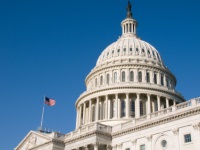
As U.S. Secretary of Treasury Timothy Geithner steps down, Treasury released a January 18, 2012 update on the Troubled Asset Relief Program (“TARP”). This most recent update highlights an often misunderstood reality — Geithner’s signature program was a smashing success. As to the bailout of the too-big-to-fail banks and AIG, the truth is that TARP has generated tens of billions of dollars in profit for American taxpayers.
The hallmark of Treasury’s work during Mr. Geithner’s tenure has been its administration of the TARP. Although created in 2008 under the previous Secretary, Henry Paulson, Mr. Geithner has had responsibility for enlarging and steering TARP since January 2009. TARP came under significant criticism for use of taxpayer funds to bail out banks from diverse constituencies, spawning both the “Occupy” movement and contributing to the 2010 Republican takeover of the House of Representatives. Nevertheless, Mr. Geithner and the Treasury Department argued that TARP ultimately would produce a profit for the government. Four years later, that forecast has proven correct, at least with respect to funds provided to financial institutions, as many TARP investments have generated tens of billions of dollars in profit for American taxpayers.
The Capital Purchase Program (“CPP”) has been the primary driver of federal profits. The CPP made funds available for the Treasury Department to purchase mortgages, mortgage-backed securities, and preferred stock from financial institutions. Treasury disbursed nearly $205 billion under the CPP and, according to the Treasury’s January 18, 2012 TARP update, already has received over $220 billion in total cash back, a return of over 7%. This profit was mainly the result of dividends and gains received through Treasury’s ownership of bank stock and other assets.
Treasury’s investment in AIG also has been particularly profitable for the federal government. Over $182 billion went to stabilize the troubled insurer in exchange for virtually all of AIG’s common stock. Since January 2011, Treasury has conducted six public offerings of AIG shares generating a total profit of over $22 billion. Treasury continues to own warrants to purchase approximately 2.7 million shares of AIG common stock, which may be sold for additional positive return to taxpayers.
With tens of billions in realized profits on its financial institution investment, the bank bailout has largely been a resounding financial success for the government and for taxpayers. Nevertheless, the common perception that the government “gave” hundreds of billions of dollars to the banks, much of which was paid out in executive bonuses, persists despite this success. The performance of the banking industry also stands in contrast to the funds extended to automotive-related companies – which have nearly $30 billion in funds outstanding and have already suffered write-offs and losses in excess of $10 billion – and the $187.5 billion bailout of the government-sponsored entities Fannie Mae and Freddie Mac, for which the taxpayers are still owed $137 billion. The profits realized by Treasury through TARP are illustrative of the resiliency of the U.S. banking system and the speed with which it returned to profitability after the financial crisis.

